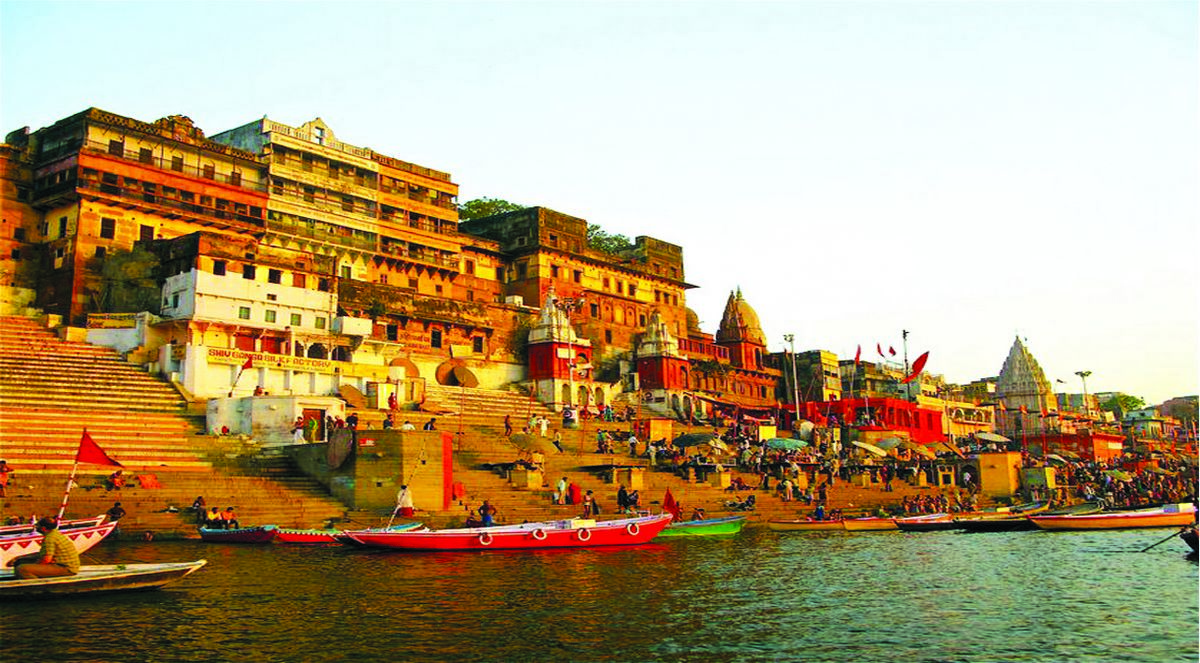By investigating the knowledge and viewpoints in the many topics found in Vedic culture we can certainly see that the practice and utilization of this Vedic knowledge can indeed assist us in many ways. In regard to all the trouble we presently find in this world, maybe it is time to look at things through a different and deeper view to find the answers and directions that are so needed. The knowledge and understandings of this great Vedic culture may indeed be what will help us see through the fog of confusion that seems to envelope so much of society.
What we find in Vedic culture are areas of study, progress and expression that are as relevant today for human advancement as they were hundreds or thousands of years ago. India and its Vedic culture has contributed much to the world, such as its music, beautiful forms of art and architecture, martial arts, astronomy, holistic medicine in Ayurveda, and the mathematical system based on the number ten, along with its yoga and philosophy. In the United States, yoga has exploded into a three billion dollar industry. A recent survey showed that 16.5 million people are practicing yoga, or 7.5 percent of the United States. Also, the Yoga Journal magazine has grown from a circulation of 90,000 in 1998, to 170,000 in 2000, to 325,000 in 2005.
Vedic mathematics is another example of its contribution to world progress. It is an ancient development that continues to play an important part in modern society. Without the advancements in math that had been established by Vedic culture as far back as 2500 BC and passed along to others, such as the Greeks and Romans, we would not have many of the developments and inventions that we enjoy today. The Greek alphabet, for example, was a great hindrance to calculating. The Egyptians also did not have a numerical system suitable for large calculations. For the number 986 they had to use 23 symbols. Even after the Greeks, the Romans also were in want of a system of mathematical calculations. Only after they adopted the Indian system that was called Arabic numerals did they find what they needed. Weights and measures and scales with decimal divisions had been found from that period which were quite accurate.
The difference was that Vedic mathematics had developed the system of tens, hundreds, thousands, etc., and the basis of carrying the remainder of one column of numbers over to the next. This made for easy calculations of large numbers that was nearly impossible in other systems, as found with the Greeks, Romans, Egyptians and even Chinese. The Vedic system had also invented the zero, which has been called one of the greatest developments in the history of mathematics.
The numeral script from India is said to have evolved from the Brahmi numerals. This spread to Arabia through traders and merchants, and from there up into Europe and elsewhere. It became known as the Arabic numerals, yet the Arabians had called them “Indian figures” (Al-Arqan-Al-Hindu) and the system of math was known as hindisat, or the Indian art.
Vedic culture already had an established mathematical system that had been recorded in the Shulba Sutras. These are known to date back at least to the 8th century BC, if not much earlier. The name Shulba Sutras meant “codes of rope”. This was because such calculations were used for measuring precise distances for altars and temple structures by using lengths of rope.
The Shulba Sutras were actually a portion of a larger text on mathematics known as the Kalpa Sutras. These and the Vedic mathematicians were recognized for their developments in arithmetic and algebra. Indians were the first to use letters of the alphabet to represent unknowns. But they were especially known for what they could do in geometry. In fact, geometrical instruments had been found in the Indus Valley dating back to 2500 BC. Furthermore, what became known as the Pythagorean theorem was already existing in the Baudhayana, the earliest of the Shulba Sutras. This was presented by Pythagoras around 540 BC after he discovered it in his travels to India. So this shows the advanced nature of the Vedic civilization.
After the Shulba Sutras, Vedic mathematics enjoyed further development in the field of Jyotish, Vedic astronomy, which used all forms of math. Indian mathematicians continued creating systems that were not known in Europe until much later in the Renaissance period. For example, Aryabhatta in the 5th century introduced sines and versed sines, and is credited as the inventor of algebra. He is said to be the first to state that the Earth travels around the sun. However, the ancient Vedic texts have described this many years earlier, which shows the wisdom of the early Vedic seers.
Aryabhatta was followed by Brahmagupta (7th century) who was the great mathematician that especially developed the use of zero and was the first to use algebra to solve problems in astronomy. Next was Mahavira (9th century) who made great strides in the use of fractions and figuring out how to divide one fraction by another. Then there was Bhaskara II (12th century) who made progress in spherical trigonometry and principles of calculus before Newton by 500 years. He used it to determine the daily motion of planets.
The Vedic system of math, as explained in the sutras, also reduced the number of steps in calculations to merely a few that otherwise required many steps by conventional methods. Thus, this ancient science is still worthy of study today.
In 600 BCE, Sushruta recorded complicated surgeries like cesareans, cataract, artificial limbs, fractures, urinary stones and even plastic surgery and brain surgery. Usage of anesthesia was well known in ancient India. Over 125 surgical instruments were used. Deep knowledge of anatomy, physiology, etiology, embryology, digestion, metabolism, genetics and immunity is also found in many texts.
A well-developed medical system was in existence by the 1st century A.D. Progress in medicine led to developments in chemistry and the production of medicine, alkaline substances and glass. Colorfast dies and paints were developed to remain in good condition over the centuries. The paintings in the caves of Ajanta are a testimony to this.
Vedic art is another ancient development that still holds much appreciation in modern times. Art in the Vedic tradition was never a mere representation of an artist’s imagination. It was always a vehicle to convey higher truths and principles, levels of reality that may exist beyond our sense perception. It was always used to bring us to a higher purpose of existence and awareness. In this way, it was always sacred and beheld the sacred. Still today it is used to allow others to enter into a transcendental experience. It may also present the devotional objects of our meditation.
Vedic paintings or symbols are unique in that they can deliver the same spiritual energy, vibration and insight that it represents. In other words, through the meditation and devotional mood of the artist, the art becomes a manifestation of the higher reality. In this way, the painting or symbol becomes the doorway to the spiritual essence contained within. They are like windows into the spiritual world. Through that window we can have the experience of darshan of the Divine or divinities, God or His associates. Darshan is not merely seeing the Divine but it is also entering into the exchange of seeing and being seen by the Divine.
Thus, the art, or the Deity, is beyond mundane principles or ingredients, such as paint, paper, stone or metal with which it may be made, but it becomes completely spiritual through which the Deity can reveal Himself or Herself. Thus, the truth of spiritual reality can pierce through the darkness of the material energy and enter our mind and illuminate our consciousness.
To convey higher realities in paintings and sculpture, everything has a meaning. The postures, gestures, colors, instruments or weapons, everything conveys a principle or purpose, which often must be explained to those who lack understanding. Thus, knowing the inner meaning of the painting increases its depth for those who can perceive it, which makes it worthy of further meditation and contemplation.
As with art, dance in India was not merely an expression of an artist’s emotional mindset or imagination, but was meant to be an interpretation or conveyance of higher spiritual principles or pastimes of the Divine. In fact, in the Vedic pantheon Shiva is known as Nataraja, the king of dancers. Shiva’s dance was also not without a more significant purpose. His dance was based on the rhythm of cosmic energy that pervades the universe, and the destruction of the illusory energy by which all souls are given the opportunity for release from the illusion to attain liberation, moksha.
In this way, traditional Indian dance is highly spiritual and often accompanies important religious rituals and holy days and festivals. Vedic dance goes back to prehistoric times. Bharata Muni wrote his Natya Shastra, science of drama and dance, over 2000 years ago. In it he explains that it was Lord Brahma, the secondary engineer of the universal creation, who brought dance (natya) and drama to the people of Earth millions of years ago, shortly after the Earth was created.
Now dance has evolved into a tradition involving various schools and styles but with strict discipline. It is not uncommon that Indian families will have their daughters spend at least several years or more in such study and practice. There is a precise method of postures, facial and hand gestures (mudras), and movements, along with footwork that must be learned and synchronized to the beat and music in order to convey specific meanings, moods and stories to the audience. Many temples, especially in South India, were known for maintaining large groups of dancers that performed at festivals and religious functions.
When the dance is performed according to the spiritual standards, which some view as similar to the practice of yoga, even the dancers can invoke a high degree of spirituality in their own consciousness and bring unity between their inner selves and God. Then the transcendental atmosphere can manifest and draw the Divine to appear in the performers on stage. Thus, the environment becomes transformed and the audience may also experience darshan of the Divine and experience an inspiring upliftment in their own consciousness. In this way, the dance is divine beauty in motion. Or it is a way of invoking the spiritual dimension into our midst. Few other forms of dance attempt to do this.
Various schools of dance include Bharata Natyam, Kathakali, Manipuri, Orissi, Kathak, Mohini Atam, Krishna Atam, Bhagavata Mela, etc. Thus, we may have many dances that convey stories from the Ramayana and Mahabharata, or Krishna-lila from the Bhagavata Purana. Nowadays this ancient art of Indian dance is enjoying a wide audience and a prominent place on the international stage.
So, as we can see, Vedic culture and its many areas of knowledge and devotional expression are still as relevant today as it was thousands of years ago. And humanity can benefit from it by introspection and in spiritual as well as material development as it did in the past.
The power of Hindu Dharma and the relevancy of Vedic culture are found in the number of tools it has always provided in order for humanity to reach its fullest potentials, both as individuals who are searching for their own fulfillment and spiritual awakening, and as a society that can function in harmony with nature and cooperation amongst themselves.
By investigating the knowledge and viewpoints in the many topics found in the Vedic tradition we can certainly see that the practice and utilization of this Vedic knowledge can indeed assist us in many ways, even in modern times.
About the Author
Stephen Knapp (Sri Nandanandana dasa) is a true Vaishnava scholar, author, photographer, and lecturer. He is a direct disciple of Srila A. C. Bhaktivedanta Swami Prabhupada. After his first reading in 1971 of the Bhagavad-gita, the classic summary of Vedic philosophy, he felt like he had found the last piece of the puzzle he had been putting together through all of his philosophical research. Thereafter, over a fifty-year span, he has studied all of the major Vedic texts, and written and produced 50 different publications and over 200 articles on the importance of Vedic culture and Indian history. He has given lectures at many different venues, such as universities, corporations, organizations, and conferences about the information he has accumulated on the timeless message of Sanatana-dharma across various countries like USA, Canada, Mexico, and India. He now spends his time working to preserve, protect, promote, and perpetuate the ageless traditions and knowledge of the Vedic culture and yoga systems of India. More about his books, articles, videos, and other projects can be found at his website: www.stephen-knapp.com



![[ India Today ] Ohio senator JD Vance thanks wife, a Hindu, for helping him find Christian faith](https://hinduvishwa.org/wp-content/uploads/2024/06/us-senator-jd-vance-reveals-how-his-hindu-wife-usha-helped-him-find-his-christian-faith-image-re-272530504-16x9_0-120x86.webp)










